EDFU
Prayer pervades the East. Far off across the sands, when one is traveling in the desert, one sees thin minarets rising toward the sky.
A desert city is there. It signals its presence by this mute appeal to Allah. And where there are no minarets--in the great wastes of the dunes, in the eternal silence, the lifelessness that is not broken even by any lonely, wandering bird--the camels are stopped at the appointed hours, the poor, and often ragged, robes are laid down, the brown pilgrims prostrate themselves in prayer. And the rich man spreads his carpet, and prays. And the half-naked nomad spreads nothing; but he prays, too. The East is full of lust and full of money-getting, and full of bartering, and full of violence; but it is full of worship--of worship that disdains concealment, that recks not of ridicule or comment, that believes too utterly to care if others disbelieve. There are in the East many men who do not pray. They do not laugh at the man who does, like the unpraying Christian. There is nothing ludicrous to them in prayer. In Egypt your Nubian sailor prays in the stern of your dahabiyeh; and your Egyptian boatman prays by the rudder of your boat; and your black donkey-boy prays behind a red rock in the sand; and your camel-man prays when you are resting in the noontide, watching the far-off quivering mirage, lost in some wayward dream.
And must you not pray, too, when you enter certain temples where once strange gods were worshipped in whom no man now believes?
There is one temple on the Nile which seems to embrace in its arms all the worship of the past; to be full of prayers and solemn praises; to be the holder, the noble keeper, of the sacred longings, of the unearthly desires and aspirations, of the dead. It is the temple of Edfu. From all the other temples it stands apart. It is the temple of inward flame, of the secret soul of man; of that mystery within us that is exquisitely sensitive, and exquisitely alive; that has longings it cannot tell, and sorrows it dare not whisper, and loves it can only love.
To Horus it was dedicated--hawk-headed Horus--the son of Isis and Osiris, who was crowned with many crowns, who was the young Apollo of the old Egyptian world. But though I know this, I am never able to associate Edfu with Horus, that child wearing the side-lock--when he is not hawk-headed in his solar aspect--that boy with his finger in his mouth, that youth who fought against Set, murderer of his father.
Edfu, in its solemn beauty, in its perfection of form, seems to me to pass into a region altogether beyond identification with the worship of any special deity, with particular attributes, perhaps with particular limitations; one who can be graven upon walls, and upon architraves and pillars painted in brilliant colors; one who can personally pursue a criminal, like some policeman in the street; even one who can rise upon the world in the visible glory of the sun. To me, Edfu must always represent the world-worship of "the Hidden One"; not Amun, god of the dead, fused with Ra, with Amsu, or with Khnum: but that other "Hidden One," who is God of the happy hunting-ground of savages, with whom the Buddhist strives to merge his strange serenity of soul; who is adored in the "Holy Places" by the Moslem, and lifted mystically above the heads of kneeling Catholics in cathedrals dim with incense, and merrily praised with the banjo and the trumpet in the streets of black English cities; who is asked for children by longing women, and for new dolls by lisping babes; whom the atheist denies in the day, and fears in the darkness of night; who is on the lips alike of priest and blasphemer, and in the soul of all human life.
Edfu stands alone, not near any other temple. It is not pagan; it is not Christian: it is a place in which to worship according to the dictates of your heart.
Edfu stands alone on the bank of the Nile between Luxor and Assuan. It is not very far from El-Kab, once the capital of Upper Egypt, and it is about two thousand years old. The building of it took over one hundred and eighty years, and it is the most perfectly preserved temple to-day of all the antique world. It is huge and it is splendid.
It has towers one hundred and twelve feet high, a propylon two hundred and fifty-two feet broad, and walls four hundred and fifty feet long.
Begun in the reign of Ptolemy III., it was completed only fifty-seven years before the birth of Christ.
You know these facts about it, and you forget them, or at least you do not think of them. What does it all matter when you are alone in Edfu?
Let the antiquarian go with his anxious nose almost touching the stone; let the Egyptologist peer through his glasses at hieroglyphs and puzzle out the meaning of cartouches: but let us wander at ease, and worship and regard the exquisite form, and drink in the mystical spirit, of this very wonderful temple.
Do you care about form? Here you will find it in absolute perfection.














